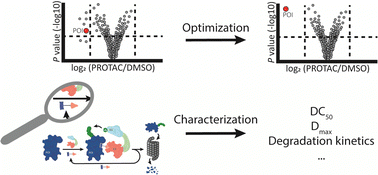PROTAC degraders as chemical probes for studying target biology and target validation
Abstract
Small molecule degraders such as PROTACs (PROteolysis TArgeting Chimeras) have emerged as new promising pharmacological modalities and the first PROTAC drug candidates are now studied clinically. The catalytic properties of PROTACs, acting as chemical degraders of a protein of interest (POI), represent an attractive new strategy for drug development. The development and characterization of PROTACs requires an array of additional assay systems that track the degradation pathway leading ultimately to degradation of the POI, identifying critical steps for PROTAC optimization. In addition to their exciting translational potential, PROTACs represent versatile chemical tools that considerably expanded our chemical biology toolbox and significantly enlarged the proteome that can be modulated by small molecules. Similar to conventional chemical probes, PROTACs used as chemical probes in target validation require comprehensive characterization. As a consequence, PROTAC-specific quality criteria should be defined by the chemical biology community. These criteria need to comprise additional or alternative parameters compared to those for conventional occupancy-driven chemical probes, such as the maximum level of target degradation (Dmax), confirmation of a proteasome dependent degradation mechanism and, importantly, also kinetic parameters of POI degradation. The kinetic aspects are particularly relevant for PROTACs that harbor covalent binding moieties. Here, we review recent progress in the development of assay systems for PROTAC characterization and suggest a set of criteria for PROTACs as high quality chemical probes.

- This article is part of the themed collection: Modalities of induced proximity pharmacology: Degraders and Beyond themed collection


 Please wait while we load your content...
Please wait while we load your content...